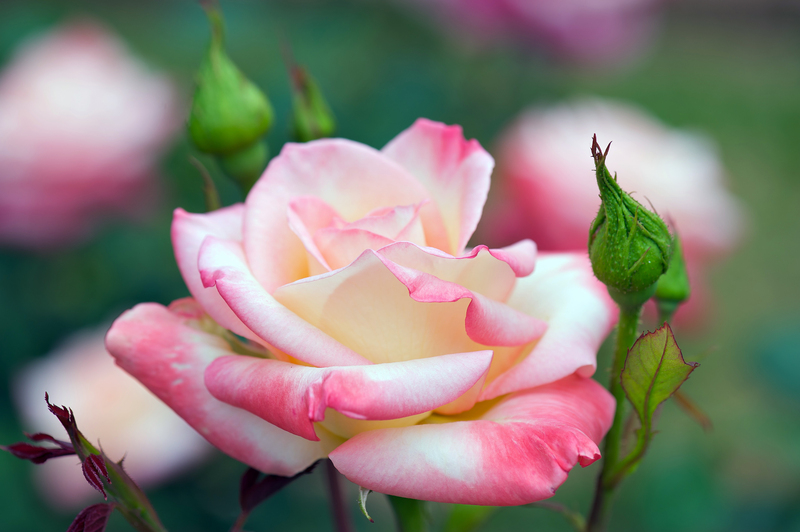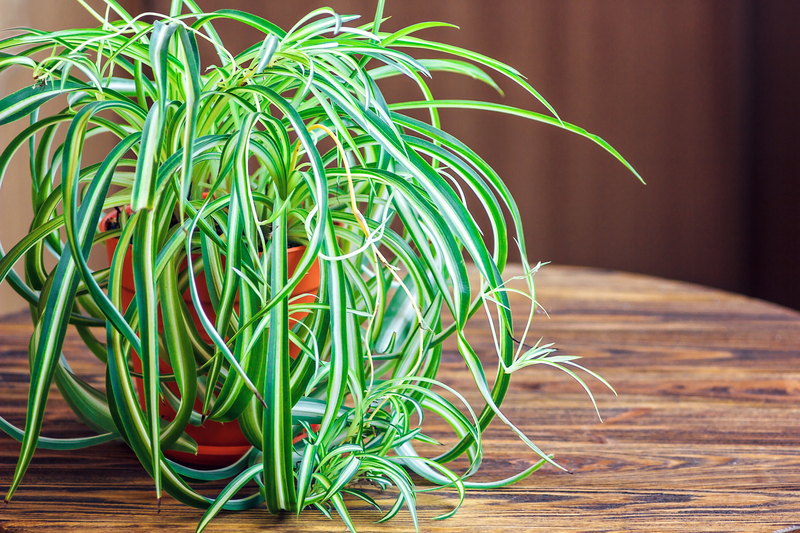5 Simple Strategies to Design a Low Maintenance Garden on a Budget
Posted on 08/06/2025
5 Simple Strategies to Design a Low Maintenance Garden on a Budget
Would you love a beautiful garden, but cringe at the thought of endless hours of weeding, watering, and spending big bucks on maintenance? You're not alone. A low maintenance garden doesn't just save you time and effort--it also saves you money. Whether you're a busy professional, a gardening newbie, or simply desire more time to enjoy your outdoor space, it's possible to design a stunning garden that fits your schedule and your budget. Let's dive into five effective strategies for creating a low maintenance garden without breaking the bank.

Understanding Low Maintenance Garden Design
Low maintenance gardening is all about designing your green space to require less ongoing effort, less water, and minimal costs. It's not just about picking the right plants--it's also about clever design choices and smart resource management. Here's how you can make it work for your yard.
What Makes a Garden Low Maintenance?
- Using hardy plants that require little water or care
- Minimizing lawn area and complex planting beds
- Incorporating sustainable, budget-friendly materials
- Employing smart watering techniques
- Reducing the need for fertilizers, pesticides, and ongoing upkeep
Strategy 1: Choose Drought-Tolerant and Native Plants
One of the best moves for a low maintenance and affordable garden is to choose plants that are well-suited for your local climate. Native plants and drought-tolerant species are naturally adapted to your region, needing less water and less intervention to thrive. Investing in these plants will save you both maintenance time and watering costs.
Why Opt for Native and Drought-Resistant Plants?
- Lower Water Bills: Plants that thrive in your local conditions need little supplemental water.
- Better Pest Resistance: Native species are usually more resilient against local pests and diseases.
- Minimal Fertilizer Needs: They naturally extract nutrients they need from your soil, requiring little or no added fertilizer.
- Increased Biodiversity: These plants provide habitat and food for native wildlife such as pollinators.
Popular Low Maintenance Plant Choices:
- Lavender--Fragrant, hardy, and drought-tolerant.
- Sedum (Stonecrop)--Great for groundcover; virtually bulletproof.
- Coneflower (Echinacea) --Beautiful and attracts pollinators.
- Russian Sage--Withstands heat and dry conditions beautifully.
- Ornamental grasses--Come in many varieties and need almost no care.
Strategy 2: Reduce the Size of Your Lawn
Lawns can be incredibly high maintenance and costly. Regular mowing, edging, watering, and fertilizing not only take time, but also eat into your gardening budget.
Why Consider a Lawn-Free or Smaller Lawn Garden?
- Less Water Usage: Lawns require more water than most other landscaping elements.
- Lower Equipment Needs: No need to purchase or maintain lawnmowers and trimmers.
- Less Fertilizer & Chemical Use: Reducing chemical inputs benefits both your wallet and the environment.
How to Replace or Reduce Your Lawn on a Budget:
- Create Gravel or Mulch Pathways: These are easy to install and practically maintenance-free.
- Use Groundcovers: Drought-tolerant groundcovers such as creeping thyme or clover fill space without mowing.
- Build Simple Garden Beds: Fill with native or low-care perennials and shrubs.
- Add Paved or Decked Spaces: Use budget-friendly pavers, stones, or recycled decking.
Strategy 3: Mulch Generously and Strategically
Mulching is a cornerstone of every low-maintenance garden design. It keeps weeds down, holds moisture in the soil, and can even nourish your plants as it breaks down. Better still, mulch comes in a variety of budget-friendly forms, making it an affordable way to upgrade your garden and cut down your chores.
The Benefits of Mulching:
- Suppresses Weeds: Blocks sunlight, preventing weeds from sprouting.
- Conserves Moisture: Keeps soil cool and reduces evaporation, meaning less watering.
- Improves Soil Health: Natural mulches break down into organic matter, improving your soil over time.
- Enhances Appearance: Neatly mulched beds look clean and tidy with minimal effort.
Budget-Friendly Mulch Options:
- Bark Chips: Long-lasting and widely available.
- Composted Leaves: Free if collected from your yard.
- Pine Needles: Excellent for acid-loving plants and free in many areas.
- Grass Clippings: If untreated by chemicals, these make a great mulch.
- Cardboard or Newspaper: Under a layer of bark or compost, this smothers weeds and adds organic matter.
Strategy 4: Incorporate Simple Hardscaping for Structure
Hardscaping refers to non-plant elements in your landscape--like patios, garden paths, raised beds, and decorative stone features. These not only reduce the space needing plant care, but also add visual interest and function to your garden. The key to keeping costs down is using simple, DIY-friendly materials and projects.
Easy, Affordable Hardscaping Elements:
- Gravel Paths: Inexpensive and quick to install. Weed membrane underneath reduces future weeding.
- Recycled Brick Edging: Use old bricks or pavers to define beds and walkways.
- Simple Raised Beds: Affordable using repurposed wood, old pallets, or corrugated metal.
- Stone or Concrete Stepping Stones: Create walkways with precast stones or DIY poured concrete.
By choosing hard, permanent landscaping features, you're reducing the area that requires watering, mowing, and ongoing care. Plus, many hardscaping materials can be sourced second-hand, salvaged, or even made yourself.
Strategy 5: Embrace Smart Irrigation and Watering Habits
Watering your garden can be time-consuming and expensive. Efficient water usage is a key element of any low-upkeep, low-cost garden design. By choosing the right strategies, you'll drastically reduce the need for daily care and lower your water bills too.
Smart Watering for a Low Maintenance Yard:
- Install Drip Irrigation: Directs water right to the roots where it's needed--less waste, fewer weeds.
- Regularly Check for Leaks and Efficiency: Keep existing hoses and sprinklers in good condition to avoid lost water.
- Water Early or Late: Watering in the cool hours reduces evaporation so your plants get the most benefit.
- Harvest Rainwater: Set up rain barrels on downspouts and use saved rainwater for the garden whenever possible.
- Group Plants by Water Needs: Placing thirstier plants together reduces effort and excess watering across your whole garden.
Bonus Tips for Budget-Friendly Low Maintenance Garden Design
- Start Small: Transform one section at a time--it's less overwhelming and easier on the wallet.
- Swap or Propagate Plants: Exchange cuttings with friends or neighbors or grow your plants from seed to save money.
- Reuse and Upcycle: Make use of old containers, pallets, and other materials as planters, raised beds, or borders.
- Limit Variety: The more different plants you have, the harder the maintenance. Stick to a few hardy varieties for simplicity.
- Install Weed Barriers: Use landscape fabric or thick layers of newspaper beneath mulch in troublesome beds to keep weeds in check.

Designing Your Affordable Low Maintenance Garden: A Quick Summary
Transforming your outdoor space into a low maintenance, budget-friendly garden is entirely achievable. Here's a quick recap:
- Plant native or drought-resistant varieties suited to your local climate for resilient, low care gardening.
- Reduce your lawn size with easy-care beds, pathways, or decking to decrease mowing and irrigation.
- Mulch effectively to suppress weeds, conserve water, and enrich your soil--all on a budget.
- Introduce smart, simple hardscaping features to minimize plant maintenance and add year-round appeal.
- Utilize water-wise irrigation and group plants by water needs for maximum efficiency and savings.
Final Thoughts: Enjoying Your Low Maintenance Garden
Remember: gardening should feel like a joy, not a chore. With these five easy and affordable strategies, you'll spend less time working and more time relaxing in your beautiful, effortlessly attractive garden. Plus, you'll benefit from lower ongoing costs, reduced environmental impact, and increased curb appeal. Start small, stay focused, and soon you'll enjoy a lush, low care landscape that fits both your lifestyle and your budget.
Ready to start your low maintenance garden journey? Whether you're tackling a tiny courtyard, a suburban lawn, or transforming an oversized backyard, these expert-backed tips will ensure your green space is easy to care for and gentle on your wallet. Happy gardening!

